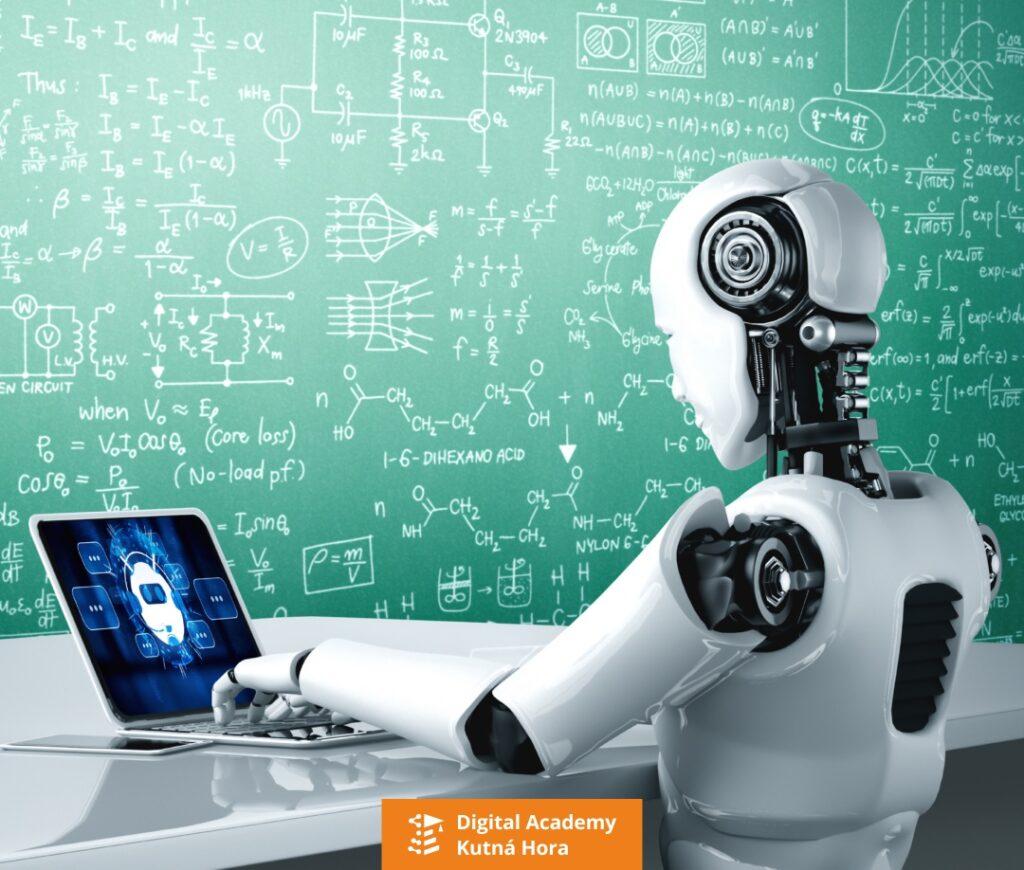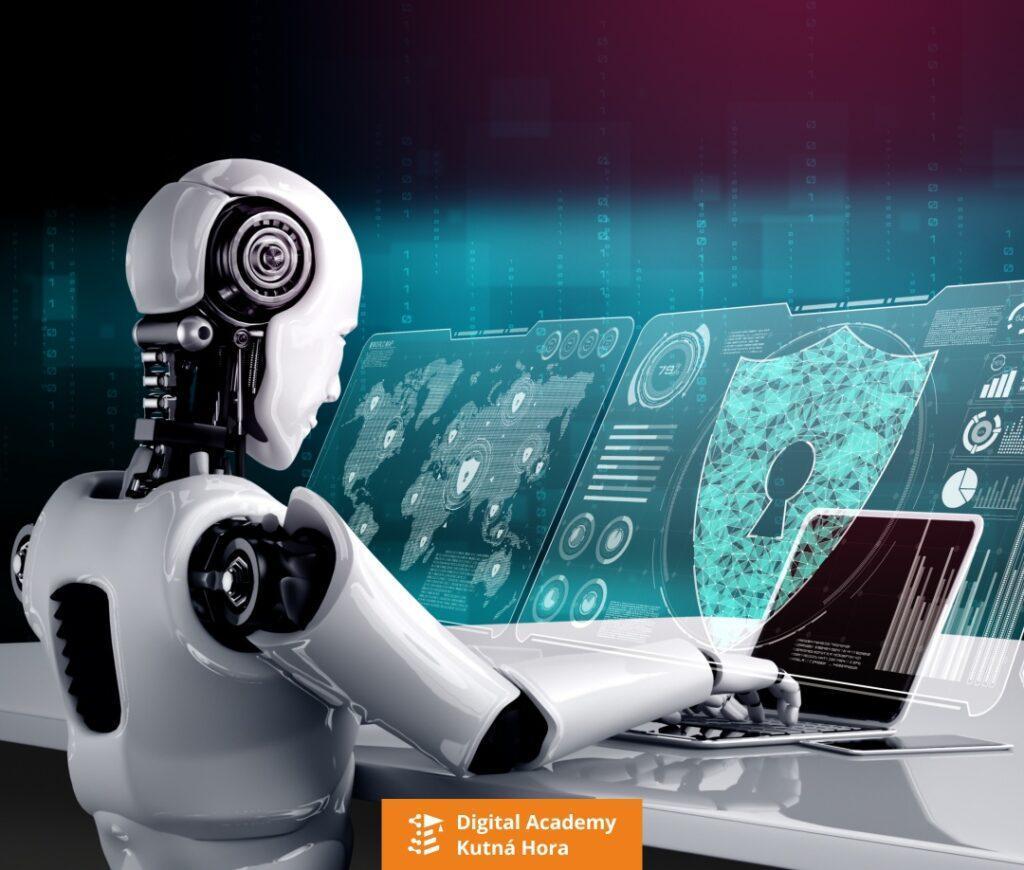V novém podcastu Národního pedagogického institutu České
republiky se Karel Kuratovský, manažer vzdělávacích programů ve společnosti
Microsoft, zabývá možnostmi využití umělé inteligence (AI) ve školách: jaké jsou přínosy a dopady
na učení žáků a výkon učitelů při výuce s využitím umělé inteligence jako
podpůrného nástroje? Chatboti jsou softwarové programy, které využívají umělou
inteligenci k interakci s lidmi pomocí přirozeného jazyka. Mezi nejznámější a
nejdiskutovanější chatboty současnosti patří ChatGPT a Bing Chat.
AI in schools: how will it change education?
According to Karel Kuratovsky, at first glance it might seem that artificial intelligence is just beginning to emerge in schools with the advent of chatbots such as ChatGPT and Bing Chat. However, artificial intelligence is not limited to chatbots. Many schools have been using various tools that incorporate elements of AI for some time. A typical example is mobile phone photography. Today's mobile phones use various features built into AI to process the appearance of photos. In the school environment, the use of AI-based translators has become more widespread in the last school year, especially with the arrival of Ukrainian students.
Chatbots in schools: how can schools adapt to them for now and how can teachers use them effectively?
According to Karel Kuratovský, there are fears among teachers that artificial intelligence could completely replace them. In reality, however, chatbots are more likely to replace only some parts of their work. Rather, AI is changing the role of teachers and opening up space for new types of learning activities that teachers can assign to their students. In the future, it will probably no longer make sense for teachers to assign students tasks such as "write an essay on ...". However, this does not mean that such assignments will disappear completely. Rather, the way tasks are set and understood will change. For example, "Write your own essay using the material and ask the AI to write an essay on the same topic. The two papers will then be compared according to predetermined criteria.

These five areas represent some of the other ways in which AI can support the work of teachers:
1. Searching for information on the Internet
In the same way that students use chatbots to prepare essays or homework, teachers can use chatbots to gather information that may be difficult or time-consuming to find online, for example for teaching. Chatbots (e.g., Bing Chat) can search for a desired web page, list all sources of information used (including foreign ones), and provide a summarized answer in English to the question. When searching for information on the web, Bing Chat always tries to find the latest relevant information. The search algorithm used is designed to display the most recent and relevant results at the top of the results list. Chatbots can also read and summarize any text so that, for example, a teacher can ask a question: "Can you summarize what this text is about?" and instruct them to do so. If the user constantly checks the output of the chatbot, no error can occur. According to Karl Kuratovsky, the biggest risk is that the chatbot will give false information. Teachers should therefore always evaluate the truthfulness of the information before working with it.
2. Creating a lesson structure
Chatbots can help teachers, for example, to structure lessons. For example, a teacher can ask a chatbot to "Prepare a structure for ten history lessons on the topic "World War II" for 6th grade". The teacher can also develop a dialogue with the chatbot. That is, he may want to further elaborate on the lesson structure assignment with specific instructions, for example, "Revise the content of the geography lesson to include more information about Spain".
3. Preparation of activity tips for the lesson
If the teacher feels that the prepared lessons may be less interesting and engaging for the students, he/she may ask for suggestions for activities that develop, for example, classroom communication, group and pair work or discussion skills.
4. Verification of knowledge
Chatboti mohou také pomoci vyučujícím při vytváření testů. Předpokládejme například, že učitel chatbota požádá o následující zadání: „Vymysli deset testových otázek do zeměpisu pro šestou třídu na téma geografie Afriky.“ Chatbot může také pomoci vytvořit testové otázky s možnostmi odpovědí. Instruktor Vás například může požádat o vytvoření následujícího zadání: Jsi učitel češtiny pro 9. třídu na základní škole. Vytvoř test s možnostmi a,b,c,d na téma ….. . Vždy bude jen jedna odpověď správně. Vytvoř pět otázek.“
5. Creating individualised tasks
It is a great challenge for teachers to create assessment tasks and assignments that match the characteristics of all students in the class. Even for such tasks, chatbots can be useful and can be used to differentiate instruction when creating tasks for students with special educational needs. Example The chatbot then informs the teacher about how the child is reading. For example, it can find out if a pupil has misread a word. The chatbot can create personalised tasks for each pupil to practise words that the pupil struggles with when reading aloud. Important: If pupils want to work independently with the chatbot in the classroom, teachers should first check that an email account and phone registration are required to use the chatbot; for pupils under 15, it is the responsibility of parents or guardians to register. Parental consent is therefore required to use this service in the context of compulsory education in primary school.

Not just chatbots: more useful tools for use in schools
Although the popularity of ChatGPT has grown significantly, it's important to remember that AI is not just about chatbots and chatbots are not just about AI. There are many tools that integrate elements of AI into commonly used applications.
For example, the Microsoft Word word processor allows transcription of audio recordings, including time stamps and tags for individual speakers, and diction-based typing. It can also perform translations and text checking, for example comparing sent messages with text on the Internet, such as Wikipedia.
PowerPoint can search for images based on the words you enter. For example, if a teacher types the word "London" into a presentation, the AI will display an image of London.
Microsoft Clipchamp makes it easy to create and edit, for example, a video from a project day. The tool can automatically generate captions, saving users the hassle of manual transcription.
In the area of image creation, tools such as Deeply, DALL-E2 and Artbreeder have developed significantly. These tools will create the desired image according to the command given. Some of them are for example: create an image of an old log cabin by a lake at dusk. The background is snow-covered mountains and an elephant is standing in front of the cabin." In this case it is a snow background. Some can be used for more complex functions, e.g. Images created in this way are very useful, for example, when teaching foreign languages. However, users are often faced with the need to verify that the photos they receive are real. As there have been cases where people have relied on photos that have no real basis, the system will need to be used more carefully.
Teachers and AI in schools: the future of their mutual role
Artificial intelligence is increasingly becoming a new topic for schools and teachers. Karel Kuratovský is concerned that schools in the Czech Republic should not follow the path of foreign educational institutions that ban the use of chatbots and return to traditional pencil and paper teaching. He also believes that this path is inappropriate in light of developments in the field of artificial intelligence. He is pleased that most educational institutions in the Czech Republic, especially universities, colleges and secondary schools, have issued their own recommendations on the use of artificial intelligence. There is a general consensus on the need for the use of chatbots and their integration into teaching. Universities have no problem with some of their students' final papers being prepared using AI, but it is important to be aware of this fact and to cite it correctly.
After the start of the 2023/2024 academic year, the results of a unique survey conducted by Palacký University in collaboration with Microsoft Corporation will reveal details of how AI is being used in schools and how teachers are responding. The survey ran until the end of June 2023.
Závěrečná rada Karla Kuratovského učitelům zní: „Nebojte se, že Vás AI nahradí. Naopak, AI změní Vaši roli a způsob práce. Vyzkoušejte si ji, zkoušejte ji pravidelně. Pokrok je obdivuhodný a za měsíc se možná vše změní a zdokonalí. Děti ji nyní mohou samy používat a my učitelé musíme umět s AI pracovat.“